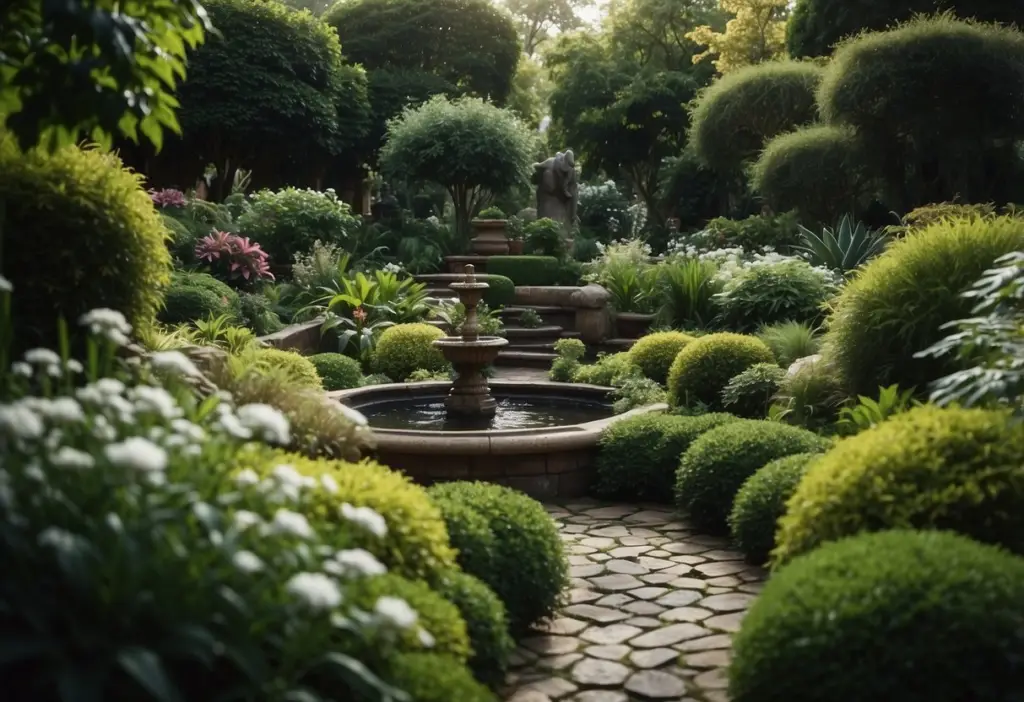
It might be a fun challenge to design a garden in an area that receives little sunlight. There are several plants that may grow in the shade and liven up the gloomy areas of your yard.
Any dimly lit location may be made into a lush, colorful area with a little imagination. Your garden will look full and varied if you mix in plants with different textures and hues. This will also bring interest and beauty to the area. There is a shade-loving plant out there for you, regardless of your goals—be they a vivid patch of nature or a tranquil haven.
Hosta Plants

Hosta plants are ideal for gardens that receive little sunlight. They come in a variety of shapes, sizes, and hues, offering a broad range of textures and colors.
Their lush foliage, which can be blue, green, gold, or variegated, adds depth and vibrancy to shaded areas. Hostas are versatile, thriving in both containers and garden beds, and they require minimal care.
Ferns

Ferns are a great addition to shaded gardens, offering a variety of forms and sizes. They excel in low-light conditions and prefer moist, well-drained soil.
The Lady Fern is notable for its delicate, feathery fronds that grow up to 2 feet tall, while the Cinnamon Fern stands out with its tall, reddish-brown fronds. Both are hardy options that enhance the texture and depth of a shade garden.
Astilbe

Astilbe thrives in shaded areas, producing stunning, feathery flower plumes that add elegance to your garden. These plants prefer partial to full shade and flourish in moist, well-draining soil.
Consider varieties like Astilbe ‘Bridal Veil’ with its ivory-white flowers or Astilbe ‘Dark Side of the Moon’ with its striking chocolate-brown leaves and vivid purple blooms. Planting in spring or fall will yield the best results.
Bleeding Heart
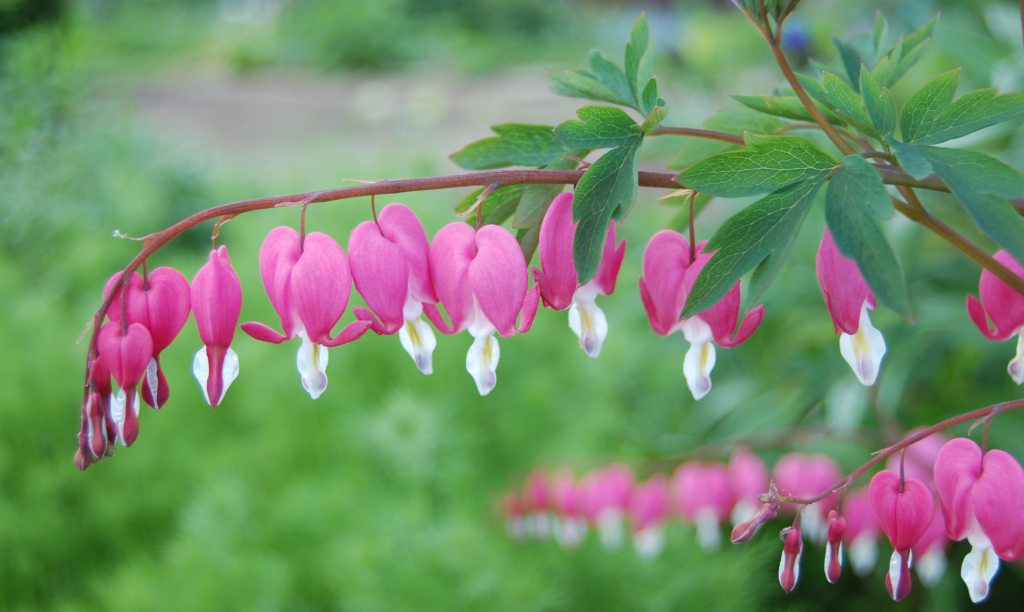
Bleeding Heart plants are perfect for gardens with little sun. They do well in partial to full shade and are known for their heart-shaped flowers that bring a charming touch to shaded spaces.
Regular watering is essential, particularly in the plant’s first year. During dry spells, ensure the soil remains moist. Growing up to 30 inches tall, Bleeding Heart adds both beauty and ease of care to your garden. For detailed care tips, visit Bleeding Heart care resources.
Coral Bells
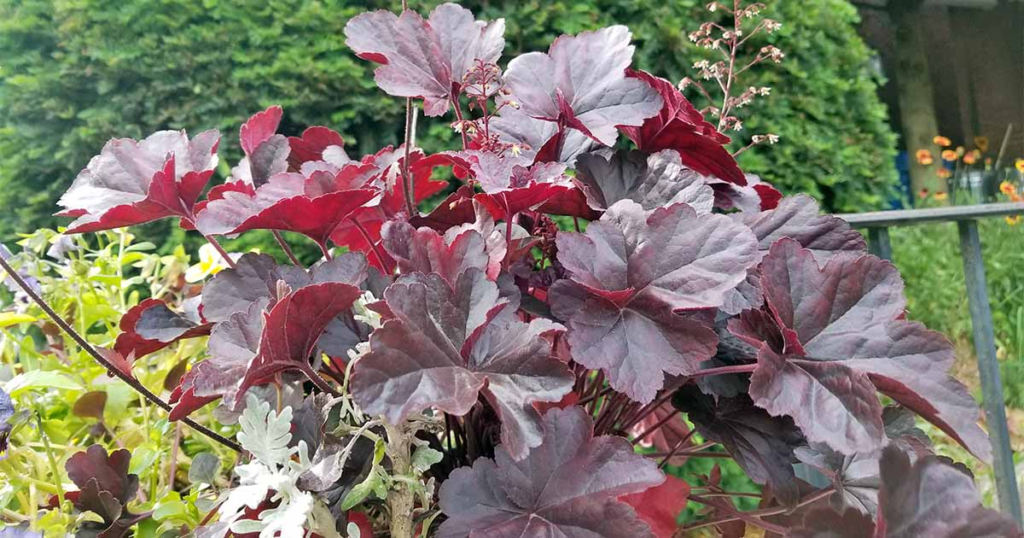
Coral Bells, or Heuchera, are excellent for shade gardens, offering a variety of colors from deep purples to bright greens. Their compact, mounding form suits small spaces and containers well.
These hardy plants require minimal maintenance and can tolerate different soil types. Pair them with green hostas or ferns for a striking visual effect. Explore more about Coral Bells for additional insights.
Lily of the Valley
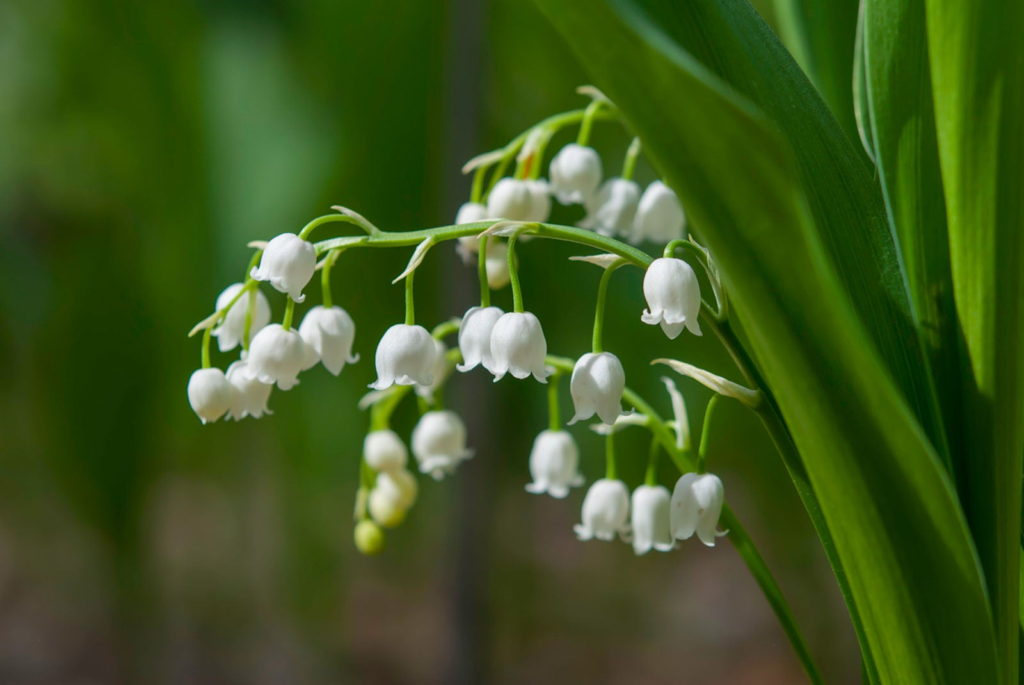
Lily of the Valley is a wonderful choice for gardens without direct sunlight. This plant thrives in shaded areas and graces your garden with its delicate, fragrant white flowers.
Combining Lily of the Valley with ferns creates a lush, green atmosphere reminiscent of a serene forest. Ensure the soil is neutral to slightly acidic to promote optimal growth and flowering. These low-maintenance plants are a great addition to any shade garden.
Japanese Forest Grass

Japanese Forest Grass, or Hakonechloa macra, is ideal for shady gardens with its bamboo-like stalks and graceful, cascading growth. It creates a lush, green carpet and thrives in partial to full shade.
Growing to about 18 inches tall, it should be spaced 12 to 18 inches apart for best coverage. Adding mulch around the base helps retain moisture and suppress weeds. For more care tips, check out Japanese Forest Grass resources.
Foxglove
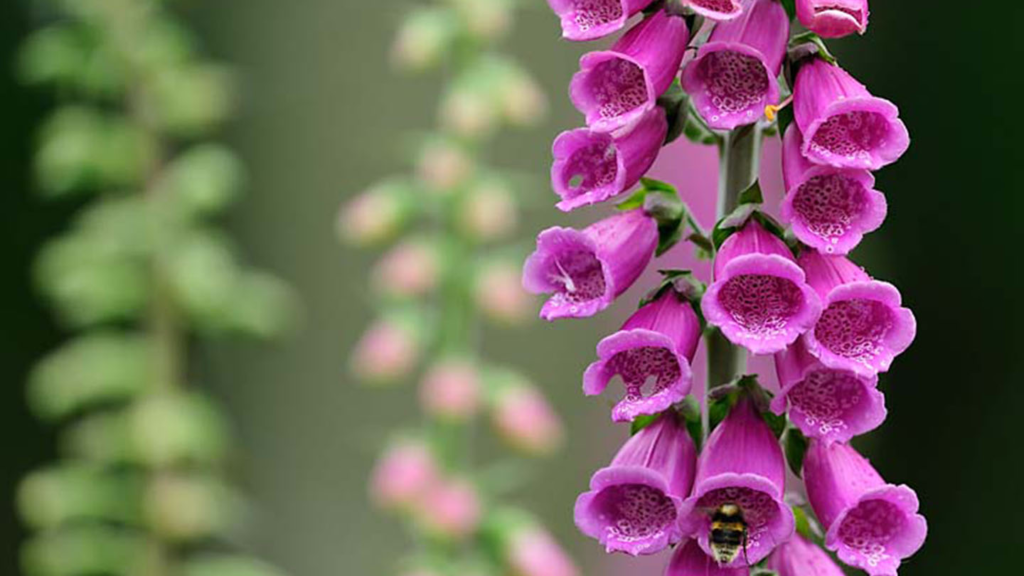
Foxgloves add height and elegance to shaded areas. They thrive in partial shade and are perfect for adding a vertical element to your garden.
Plant Foxgloves in well-draining soil with a slightly acidic to neutral pH. Space them 12-18 inches apart to allow for their full growth. Their tall spikes and vibrant blooms make a striking addition to garden beds. Learn more about growing Foxgloves at Homes & Gardens.
Brunnera
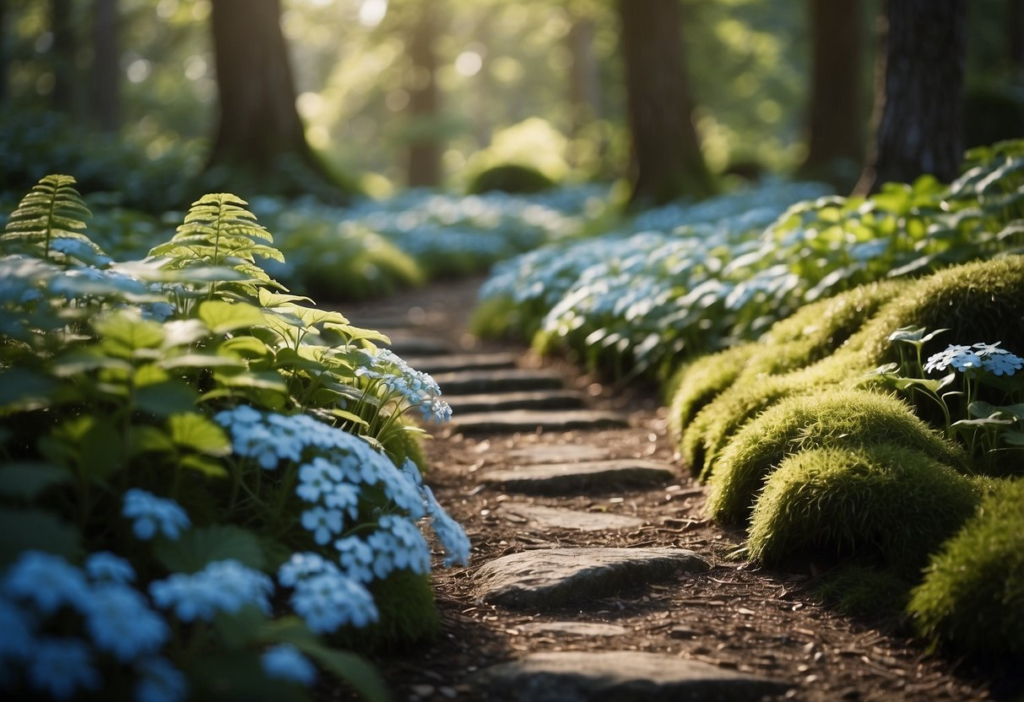
Brunnera, or Siberian Bugloss, is well-suited for shady gardens. With heart-shaped leaves often adorned with silver markings, this plant grows to about 12-15 inches tall and can spread 2-3 feet wide.
It flourishes in moist, well-drained soil and prefers cooler garden spots. Spring brings blue flower clusters that add a lovely touch. Regular watering, especially during warm weather, will keep Brunnera thriving.
Hydrangeas

Hydrangeas are an excellent choice for shady gardens, flourishing without direct sunlight. They come in a variety of colors, including pink, blue, and white, adding vibrant hues to your garden.
Combine them with other shade-loving plants like hostas and heucheras for a stunning effect. Regular deep watering will keep them hydrated. Enhance your garden borders with hydrangeas and ornamental grasses like Blue Fescue for a serene and charming look.
Understanding Low-Light Gardening

Low-light gardening focuses on selecting plants that thrive with minimal sunlight. This approach has its own set of benefits and challenges that can be managed with thoughtful planning.
Benefits of No Sun Gardens
Gardens with no direct sunlight can be transformed into beautiful landscapes using plants like ferns, hostas, and columbines. These plants often require less water, which reduces maintenance.
Shaded areas create a cooler environment, perfect for relaxing spots in the garden during hot weather. Some vegetables, such as lettuce and spinach, can also grow well in low-light conditions, adding variety to your garden.
Challenges and Solutions
Gardening in low-light areas presents challenges, such as poor soil quality and limited plant performance. Improve soil structure and moisture retention by adding compost or organic matter.
Choose plants that are adapted to low-light conditions, such as elephant ears, sweet potato vines, and alumroot. Managing pests may require natural repellents and proper spacing to prevent mold and mildew.
Plant Selection for No Sun Gardens
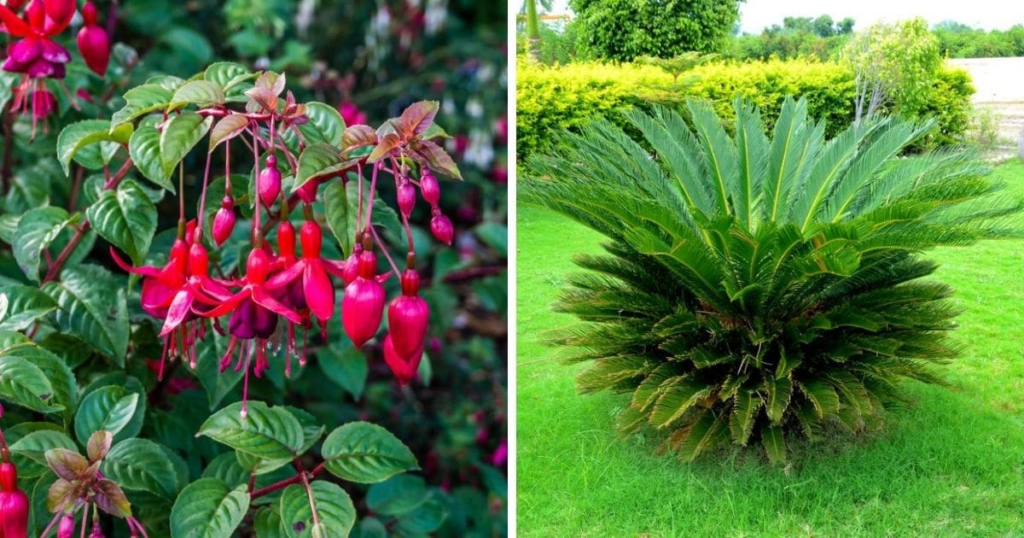
Selecting plants for gardens with little to no sunlight involves choosing varieties that thrive in shade, including both decorative flowers and edible plants.
Shade-Tolerant Vegetables and Herbs
Growing vegetables and herbs in shady spots can be rewarding. Leafy greens like spinach, kale, and arugula thrive in low-light environments. Herbs such as parsley, cilantro, and chives also do well in shade and add fresh flavors to your meals.
Ensure the soil is rich in organic matter for optimal growth. Compost can provide the necessary nutrients for these plants.
Best Flowers for Shady Areas
For color in shady gardens, consider flowers like hostas and coral bells. Hostas offer lush foliage in various shades, while coral bells bring vibrant colors to the mix. Lungwort, with its lovely blooms, and hellebores, with their early spring flowers, are also excellent choices for shade.
These plants not only survive but thrive in low-light conditions, ensuring your shaded garden remains vibrant and beautiful. Keep the soil moist and well-drained for the best growth.
